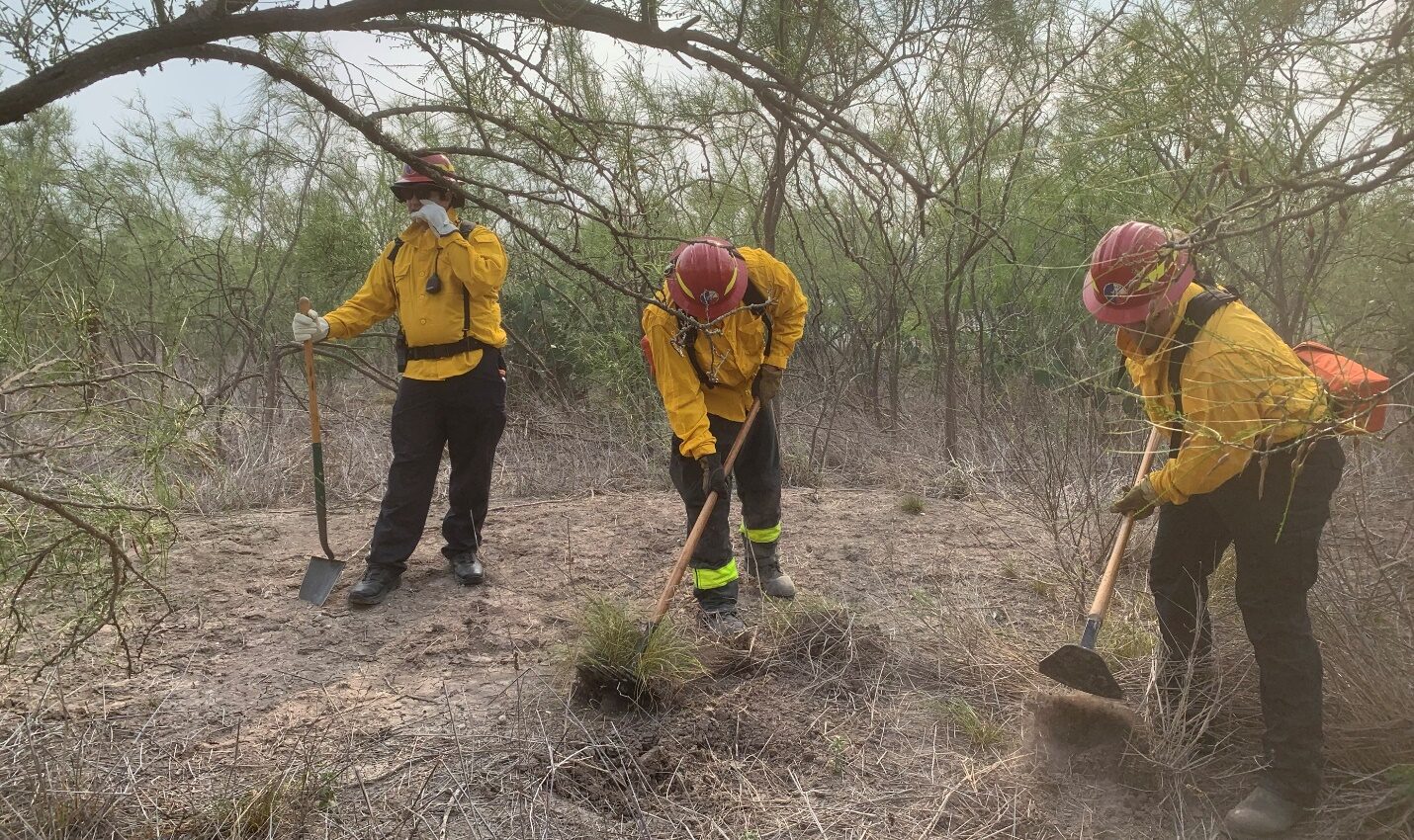STC tackles high wildfire risk with free training for local firefighters

Photo Above: South Texas College partnered with the Texas A&M Forest Service to offer a Wildland Fire Behavior class at no cost to local fire departments at STC’s Regional Center for Public Safety Excellence in Pharr. Credit — STC Communications
Selene Rodriguez, STC Communication Specialist
Just a few months ago, Texas experienced the largest wildfire in the state’s history, and with an increasing threat over the summer months, Rio Grande Valley fire agencies are now seeking training through South Texas College to be better prepared.
STC has partnered with the Texas A&M Forest Service to offer a Wildland Fire Behavior class at no cost to local fire departments at STC’s Regional Center for Public Safety Excellence in Pharr.
“This is a very insightful training offered statewide, and we wanted to bring it to the RGV in response to requests from our local fire agencies,” explained Robert Vela Jr., site administrator for STC’s Regional Center for Public Safety Excellence. “Recently, we held a highly successful bulldozer course in Starr County, and now, with this training, we are continuing those efforts. We take pride in providing essential training to the entire region.”
According to Roel Esparza, fire coordinator for the Texas A&M Forest Service, various factors such as climate change have led to an increase in the severity of wildfires across the state over the last three years.
“We’re no longer fighting five-acre fires. These fires don’t stay small, so we need to put them out fast,” he explained. “Texas is experiencing an increase in activity across the board, whether it’s wildfires, floods, or severe storms. We have always been affected by these hazards, but we’re definitely seeing an increase, maybe not in the number of incidents per se, but in their severity.”
During the five-day Basic Firefighter/Introduction to Wildland Fire Behavior class, over 20 firefighters and volunteers from San Juan, Alamo, Pharr, and McAllen gained valuable knowledge on wildland operations.
The training, which spanned four days of classroom lessons and a full day of hands-on skills, covered strategies and equipment used to combat wildfires, radio communications, hazard mitigation and safety protocols.
“It’s a completely different way of firefighting. There is no access to fire hydrants, so it’s not just about throwing water. There’s a lot of digging involved, manually stopping the spread using shovels or using bulldozers,” explained McAllen Fire Department Training Chief Phillip Winger. “We appreciate this opportunity to learn more about it. Even though there might not be many wildland fires in McAllen, the city is expanding to the north where there are many rural areas, and this helps us get more familiar with responding to larger fires or supporting nearby agencies.”
He emphasized the importance for local fire departments and various agencies in the RGV to support each other in the face of emergency situations, highlighting the significance of training opportunities and the support provided by STC.
“We already have 15 certified firefighters in wildland firefighting, but we have over 100 personnel across the department,” he added. “This was a great class, and we appreciate STC for bringing these opportunities locally so we can give more people the tools they need. We pursue knowledge and certifications all over the state, but when we can obtain them locally through STC, it’s much better.”
For more information on upcoming trainings and programs offered at STC’s Regional Center for Public Safety Excellence, visit southtexascollege.edu/rcpse/ or call 956-872-4208.

